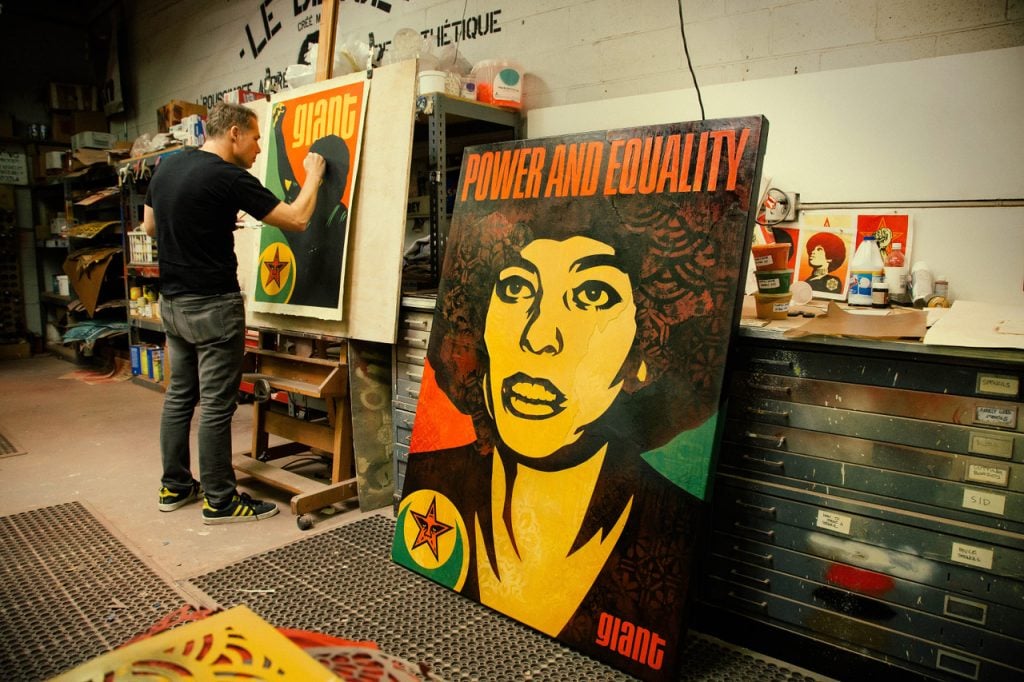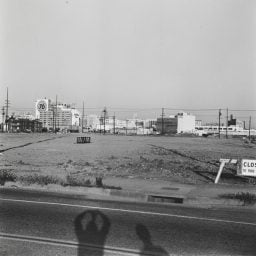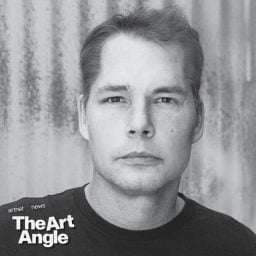Artist and activist Shepard Fairey (b. 1970) rose to prominence as part of the street art movement, finding fame for both his signature graphic aesthetic and use of social critique in his work. Like many of his contemporaries, Fairey’s work frequently melds the commercial and the purely artistic, allowing for a nuanced engagement with timely social, political, and cultural issues. His influential “Obey” series, which became both a repeating motif in his oeuvre as well as the foundation for his brand, brought Fairey to the mainstream, but he is perhaps most well-known for his work Hope (2008) for Barack Obama’s presidential campaign. Fairey revisited the red, white, and blue portrait style of Hope again in 2017, but instead created a suite of three featuring portraits of culturally diverse women—a riposte to the bluster of then President-elect Donald Trump.
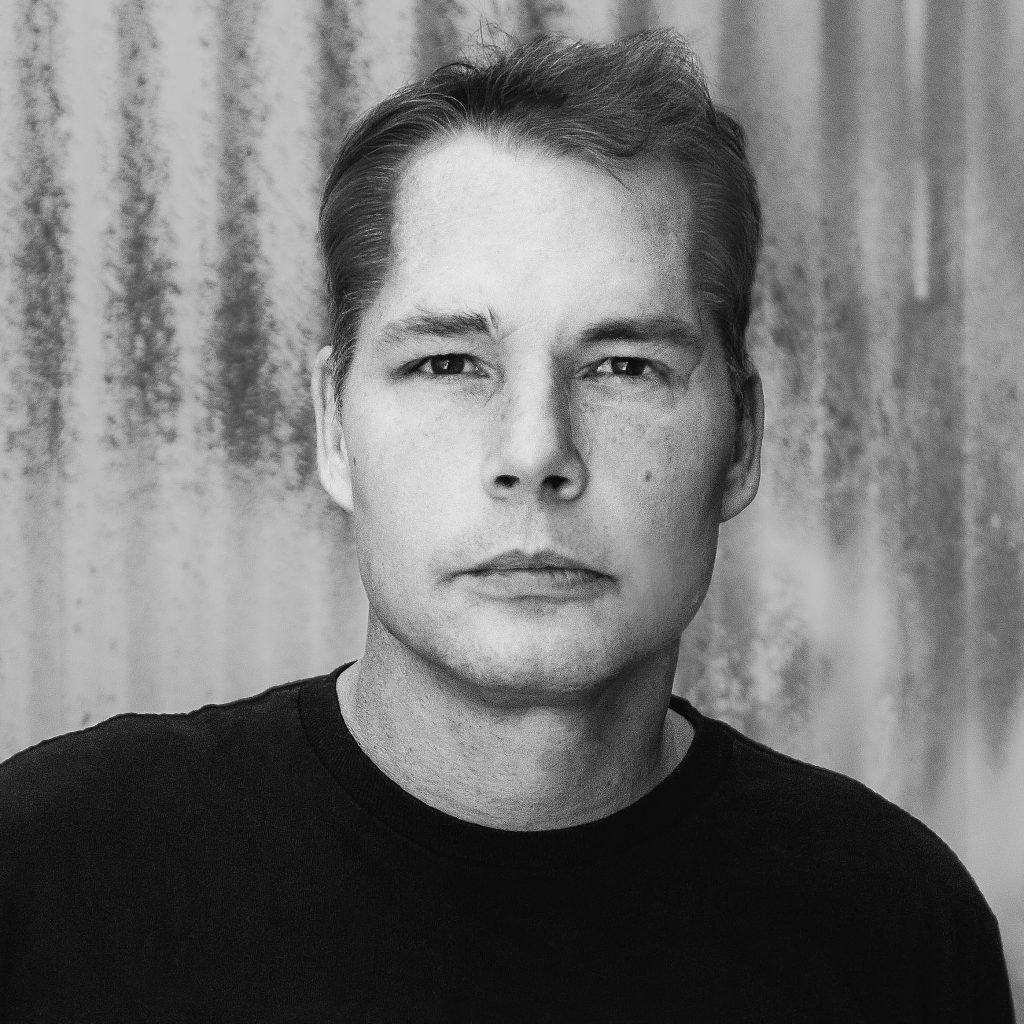
Shepard Fairey.
Live for bidding through March 28, 2023, Artnet Auction’s Shepard Fairey: Art as Activism sale includes a wide array of Fairey’s posters, prints, and series that speak to the artist’s involvement with social causes through his artistic practice. We asked Fairey about five of the works included in the sale to learn more about their inspirations and meaning.
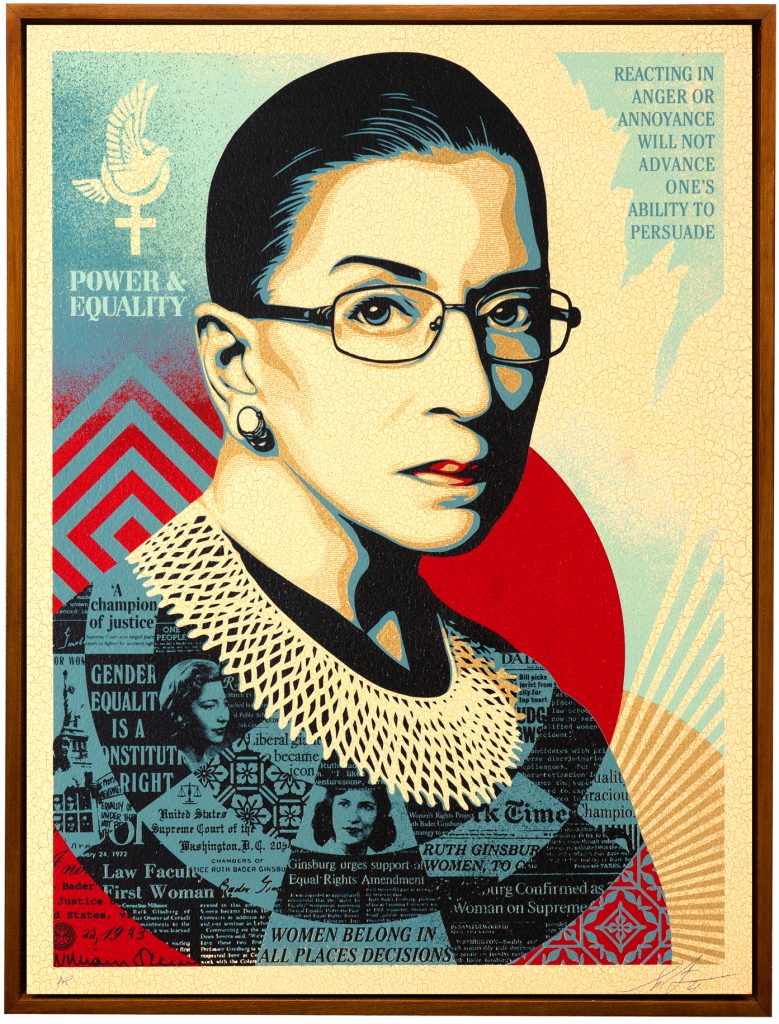
Shepard Fairey, A Champion of Justice (Ruth Bader Ginsburg) (2021). Est. $3,000–$5,000.
You’ve portrayed many politicians throughout your career, most notably Barack Obama, a work that became a visual shorthand for his 2008 presidential campaign. This particular work was completed a year after the Supreme Court justice Ruth Bader Ginsburg’s death. Why Ginsburg—what attracts you to her?
I was a longtime admirer of Ruth Bader Ginsburg and had considered making a piece on her, not only because she is a trailblazer as a woman, but also because she pushed for progress on many important issues. When she passed away, I felt it was important to honor her legacy and create a tribute. I spent a lot of time choosing secondary elements like news clippings and laws passed, charting her evolution and accomplishments. I felt it was more important to compose a piece I was proud of for posterity than to rush something immediately after she died.
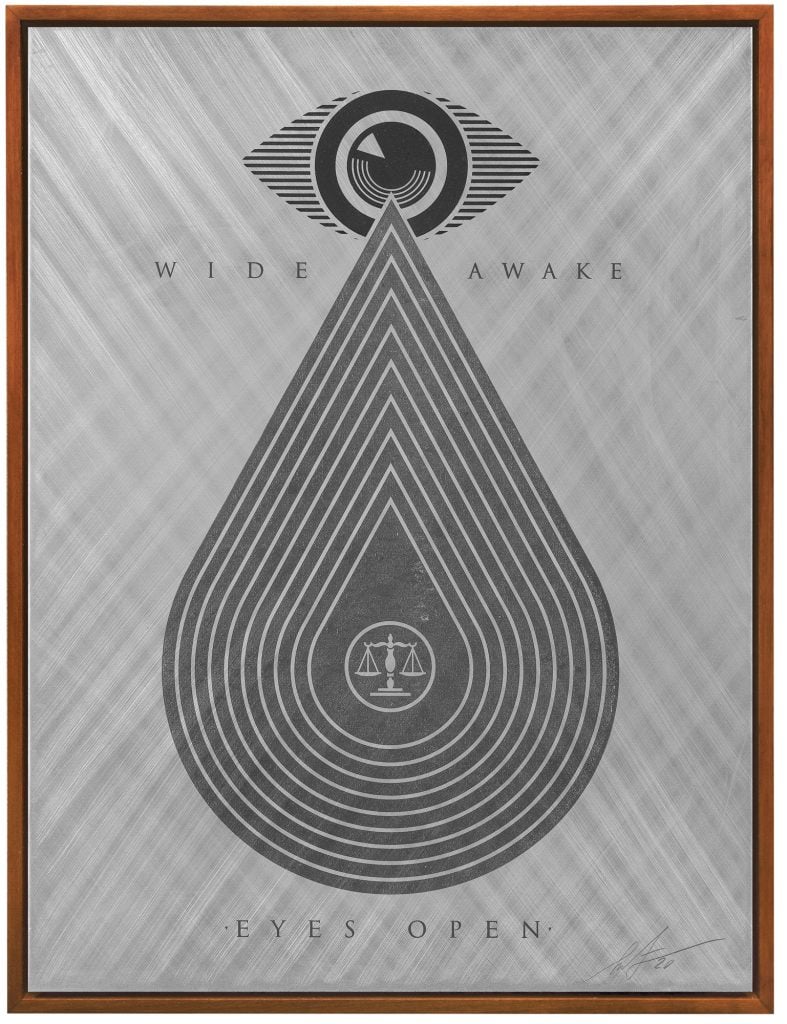
Shepard Fairey, Wide Awake Eyes Open (2019). Est. $3,000–$5,000.
This particular print is silkscreen on metal, rather than paper. Could you talk us through the process of creating these—why and how?
I’ve long been inspired by the various printing processes as an empowering means of creating and disseminating images. Printing plates are beautiful and powerful as objects and instruments. When I went to Barbara Kruger’s show at the Museum of Contemporary Art, Los Angeles, in 1999, she used some inked letterpress or relief plates as art objects. I loved how those looked but could not afford to make one-of-a-kind relief plates, so instead I developed a technique of printing with translucent inks on distressed aluminum to mimic the look of a printing plate. Since printing is an essential part of my practice, I love how these pieces reference the process.

Shepard Fairey, Elysium Lotus (Red) (2021). Est. $8,000–$12,000.
Lotuses—and, more generally, flowers—appear throughout your work. What is the significance of these motifs?
The lotus is a symbol of harmony and resilience. It’s a beautiful flower, but it grows in shallow water and, in many cases, from mud. That beautiful and powerful metaphor connects with my philosophy of rising above adversity by remaining positive and creative.
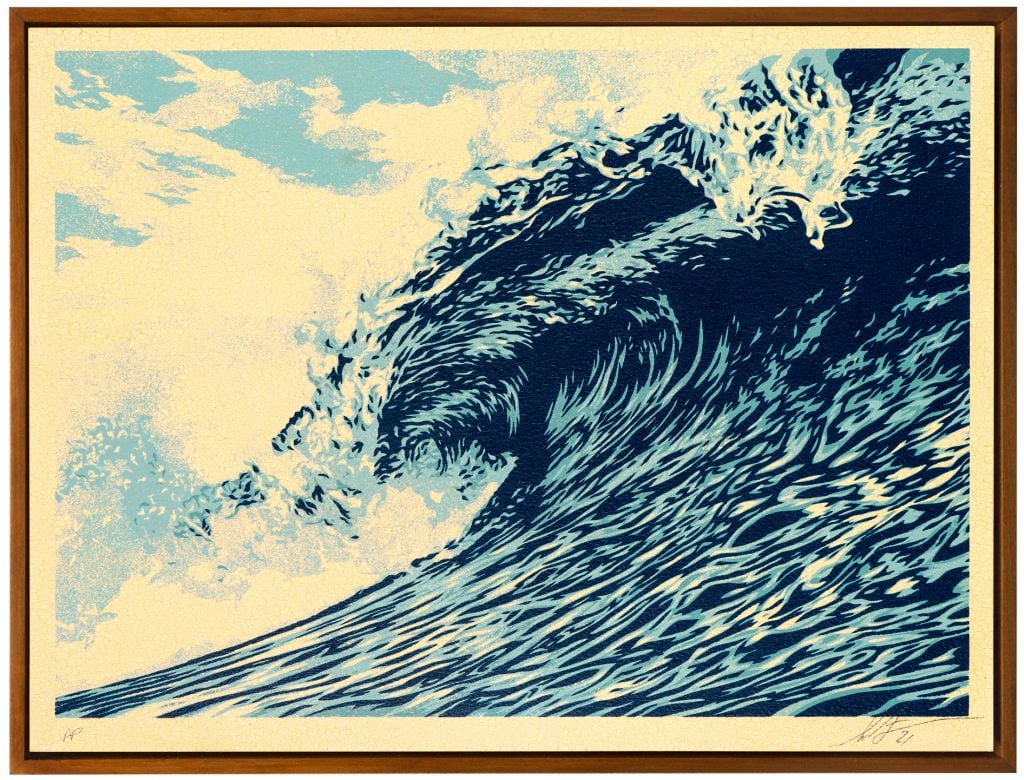
Shepard Fairey, Wave of Distress (2021). Est. $3,000–$5,000.
This subject seems surprisingly apolitical. Does it qualify as “art as activism”?
Not all of my pieces are activist or politically oriented in an overt way. Waves and the ocean have several symbolic elements I’m drawn to, and I find the water’s surface beautiful and hypnotic. When I make art of waves, I’m hoping the viewer will think about things like the power of nature, rising sea levels, and the valuable but delicate ecosystems within the ocean.
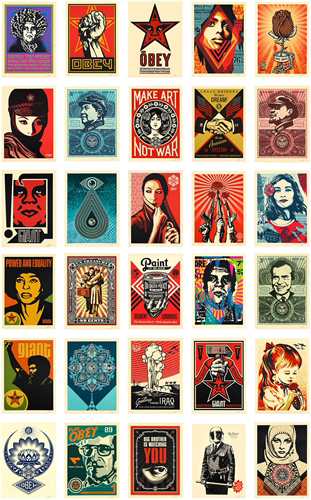
Shepard Fairey, 3 Decades of Dissent (complete set of 30 works) (2019–20). Est. $25,000–$30,000.
This set of 30 works spans 30 years of your career and features André the Giant, your seminal Obey, and more. Can you tell us about the process behind selecting these specific works, and any personal highlights that are featured within this series?
The artworks represented in Facing the Giant: 3 Decades of Dissent & New Works were selected because of their aesthetic and conceptual importance. They address recurring topics in my career, such as phenomenology, self-empowerment, rebellion, abuse of power, environmental destruction, racism, gender inequality, xenophobia, campaign finance reform, the military-industrial complex, propaganda, war and peace, and economic imperialism.
The logical first image to highlight is the O.G. André with the ripped layers of different backgrounds I created between 1989 and 1994. I focused primarily on the original André the Giant visage for the first few years of my street art experiment, exploring lots of color combinations, Op Art, and animal-patterned backgrounds. This version of the image combines my more recent ripped aesthetic with those historical iterations to reference my past but also create something new.
Another image that was an important part of my evolution is Proud Parents, with the couple cradling the bomb like a baby. That image marks a transition from my Russian Constructivist–inspired phase to an exploration of stamp and currency design and a more current-events-oriented approach to my content. The Iraq War was a focus in 2006 when I made this image, and the sense of humor is an important device to help the audience process the idea of it.
The Defend Dignity image from the “We The People” series, which was made as part of a three-poster series at the beginning of 2017, was a response to Donald Trump’s election and of accompanying rhetoric disparaging already marginalized groups like Black, Latino, and Muslim people. The style that I used for this image and the rest of the series connects to the Obama Hope poster I created in 2008 but adds new elements like newspaper clippings and symbols inside ripped areas that allow for greater dimension to the narrative and social context of the piece. The image and series are important because the subjects are real people who are not famous, so they serve not only as archetypes for their group but as sympathetic and relatable individuals.
Looking ahead, can you tell us about what you are working on currently?
I have a body of work called “Facing the Giant” spanning from 1989, when I started, to 30 years later in 2019, when I revisited key pieces. That show is up at the Laguna Art Museum starting on March 11. I also have work in the show “Visual Language: The Art of Protest” at my gallery Subliminal Projects in L.A., up until March 25. I have a mural project this spring, and then to Dallas for a talk at Dallas Contemporary for my show “Backward Forward” as well. More exhibitions are in the works this fall that I can’t speak about yet, but I’m excited to show in Europe and Asia!
With the numerous exhibitions of your work happening right now, from Dallas to London, and the co-curation of “Visual Language: The Art of Protest,” can you tell us more about your role as curator, and how it intersects with your art creation?
I enjoy curating because it’s an opportunity to tell a story and highlight art and people I think are deserving. I’m frequently working with people who have inspired me or are contemporaries I have collaborated with. Still, sometimes I only know an artist’s work from a distance, yet I feel compelled to share what they are doing with an audience. This all impacts my work in the form of inspiration and connection, which is predominantly what art is about anyway.
Shepard Fairey: Art as Activism is live for bidding on Artnet Auctions through March 28, 2023.
